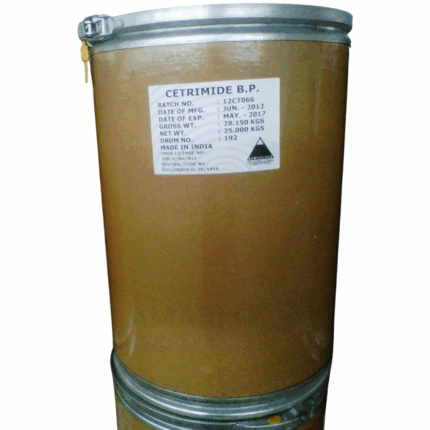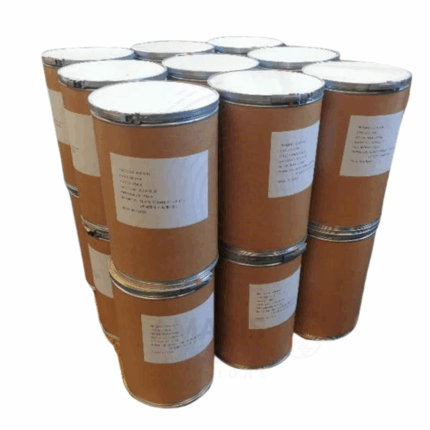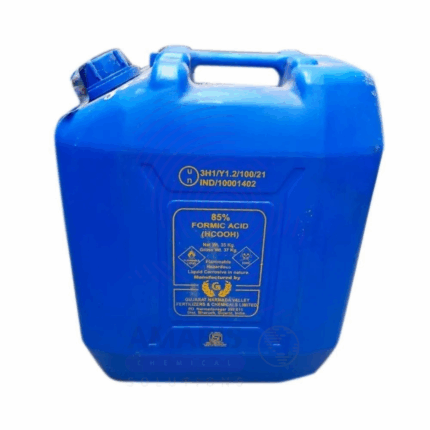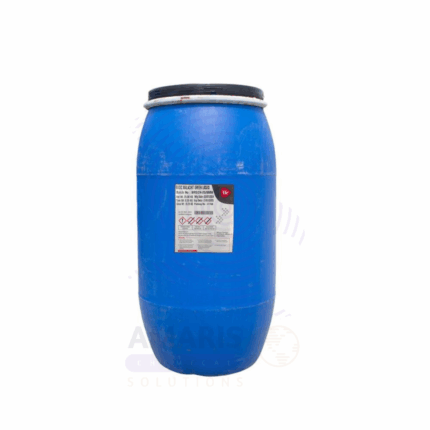Indofil Lp30
Whatsapp Order
Indofil Lp30 is a low-viscosity, thermosetting polyurethane resin specially formulated as a leather finishing binder. Designed for high-performance coatings, it provides excellent film formation, flexibility, and adhesion over leather, textiles, and engineered substrates. Available in solvent-borne, waterborne, or mixed systems, LP30 offers tailored dry time, gloss control, and durability suitable for high-end footwear, upholstery, and garment applications.
Description
Table of Contents
Toggle
Indofil Lp30
Primary Uses
- Leather Coatings
- Durable Topcoat Binder: Serves as the polymer base in PU leather coatings to provide abrasion resistance, flexibility, and durability on shoe uppers, bags, and apparel.
- Adhesion Promoter: Enhances bond strength between leather and layered finishes (e.g., lacquers, pigments, embossing agents).
- Gloss/Sheen Tuner: Used to formulate coatings with varying finish levels—from matte to high gloss—depending on additive load and process.
- Textile Finishing
- Fabric Coatings: Applies PU films on textiles for waterproofing, hand feel, and surface enhancement, often seen in premium rainwear and upholstery fabrics.
- Soft & Stretch Coatings: Delivers flexible, soft-hand coatings that maintain drapability and resistance to flex-cracking in stretch textiles.
- Synthetic Substrate Finishing
- Engineered Leather and Synthetic Skins: Ensures a consistent binder film for printed or coated synthetic leathers used in automotive interiors, furniture, or fashion accessories.
- Non-woven Binder: Functions as a bonding matrix in non-woven coated textile composites, enhancing fiber cohesion and structural integrity.
Secondary Uses
- Wood and Furniture Coats
- Acts as a flexible, yet durable, resin coat for decorative wood veneers or MDF panels in furniture, offering scratch resistance and minimal UV yellowing.
- Industrial Protective Coatings
- Applied in thin PU coatings on metal or composites for industrial machinery interfaces where durability, flexibility, and chemical resistance are needed.
- Craft & Prototyping
- Used by artisans who coat leather or fabric prototypes for functional samples and scaled production tests, benefiting from low viscosity and flexibility.
KEY ATTRIBUTES
- Basic Identification Attributes
- Chemical Name (IUPAC): Polyurethane prepolymer (isocyanate-terminated)
- Common/Trade Name: Indofil LP30
- CAS Number: Not applicable (proprietary mixture)
- HS Code: 3909.50.00 (Polyurethane resins)
- Synonyms: PU binder; Leather PU resin; Thermoset PU resin
- Physical & Chemical Properties
- Physical State: Liquid resin (dispersion or solution)
- Color & Odor: Pale amber to light amber; mild solvent or resinous odor
- Viscosity: Low–medium (20–200 cP), depending on version
- Solids Content: 25–45 % by weight
- pH (if waterborne): Approximately 7.0–8.5
- Dry Time: Tack-free in minutes; full cure in 12–24 hours
- Film Properties: Flexible, abrasion-resistant, flexible to –20 °C
- Adhesion: Excellent to leather, PU substrates, fabric
- Safety & Hazard Attributes
GHS Classification
- Solvent-borne: Flammable liquid, skin/eye irritant, respiratory sensitizer
- Waterborne: Not classified or minimal hazard
Toxicity
- Solvent versions: Moderate irritation risk; may cause headaches or dizziness if inhaled
- Water versions: Low toxicity; non-irritant
Exposure Limits
- Must comply with VOC regulations and occupational exposure limits (e.g., isocyanates)
- Storage & Handling Attributes
Storage Conditions
- Store at 10–30 °C; protect from freezing and direct sunlight
- Store solvent-based versions in well-ventilated, fire-safe areas
Container Type
- Sealed pails or drums (metal for solvent, plastic for waterborne)
Shelf Life
- 6–12 months depending on batch and version
- Avoid moisture exposure for solvent systems; water forms may separate over time
Handling Precautions
- Stir or recirculate before use; avoid water contamination in solvent blends
- Use explosion-proof equipment if handling solvent variants
- Regulatory & Compliance Attributes
- VOC Compliance: Formulated to meet regional VOC standards when used in coated leathers/textiles
- REACH: Components conform to EU environmental safety standards
- ISO/ASTM Standards: Meets common adhesion and abrasion test protocols for leather and textile coatings
- Environmental & Health Impact
- Biodegradability: Waterborne versions largely biodegradable; solvent-borne less so
- Ecotoxicity: Low when cured; uncured isocyanates may pose environmental hazards
- Bioaccumulation: Not expected
- Disposal: Cured waste can be treated as inert; uncured resin and solvents treated as hazardous waste
SAFETY HANDLING PRECAUTIONS
- Safety Handling Precautions
PPE Required
- Solvent-based: NIOSH-approved respirator, gloves, eye protection, anti-static clothing
- Water-based: Gloves and goggles advised for process safety
Handling Guidelines
- Use in fume-hood or spray booth with adequate exhaust
- Prevent ignition or spark generation with solvent-based variants
Storage Measures
- Ensure proper grounding and bond lines for solvent containers
- Keep containers sealed when not in use to prevent moisture or solvent loss
- First Aid Measures
- Inhalation: Move to fresh air; seek medical attention if chemical respiratory symptoms occur
- Skin Contact: Wash thoroughly; solvent versions may dry skin
- Eye Contact: Rinse eyes for 15 minutes; seek medical aid for persistent irritation
- Ingestion: Do not induce vomiting; seek immediate medical attention
- Firefighting Measures
- Fire Hazards
- Solvent-based: Highly flammable; vapor may spread far from source
- Water-based: Not flammable
- Extinguishing Media
- Solvent: Foam, CO₂, dry chemical—do not use water jets
- Water: Water spray or foam acceptable
- Special Precautions
- Use SCBA, fire-resistant clothing, and extinguish surrounding fire sources
- Prevent solvent vapor ignition and ensure container cooling during fire exposure
Related products
Ammonium Cupric Chloride
Ammonium Cupric Chloride is a blue-green crystalline inorganic compound composed of copper, ammonium, and chloride ions. It is widely used as a source of copper in agricultural fungicides and bactericides, as well as in electroplating, chemical synthesis, and textile dyeing. Its antimicrobial properties make it valuable for controlling fungal and bacterial infections in plants. Additionally, it serves as a precursor in various industrial and laboratory applications.
Cetrimide Powder
Cetrimide Powder is a high-purity quaternary ammonium compound widely used for its antiseptic, disinfectant, and surfactant properties. It is a cationic surfactant derived from cetyltrimethylammonium bromide and appears as a white to off-white crystalline powder with a slight characteristic odor. Known for its excellent antimicrobial efficacy against bacteria and fungi, cetrimide is frequently incorporated in pharmaceutical, personal care, and industrial formulations. It acts as a bactericidal agent, detergent, and emulsifier, providing effective cleaning and disinfecting action.
Chlorobutanol BP
Chlorobutanol BP (also known as 1,1,1-Trichloro-2-methyl-2-propanol) is a white crystalline solid or powder, with a slight camphor-like odor and a bitter taste. It is a multifunctional preservative, anesthetic, and antimicrobial agent commonly used in pharmaceutical, cosmetic, and personal care products. Chlorobutanol exhibits bacteriostatic and fungistatic properties, making it effective in preventing microbial contamination in aqueous formulations. It also possesses mild local anesthetic effects, frequently used in ophthalmic and injectable preparations as a preservative and stabilizer.
Chloroxylenol BP
Chloroxylenol BP is a pale yellow to colorless crystalline solid with a mild phenolic odor. It is a broad-spectrum antimicrobial agent widely used for its bactericidal, fungicidal, and antiviral properties. Chemically known as 4-chloro-3,5-dimethylphenol, Chloroxylenol acts by disrupting microbial cell membranes and inhibiting enzyme systems, making it effective against many gram-positive and some gram-negative bacteria, fungi, and viruses. Its relatively low toxicity and skin irritation profile compared to other phenols have made it a preferred active ingredient in antiseptics, disinfectants, and preservative formulations across pharmaceutical, personal care, household, and industrial applications.
Formic Acid
Formic Acid (methanoic acid) is the simplest carboxylic acid, typically supplied as an 85% aqueous solution. It is a colorless liquid with a pungent, penetrating odor and strong acidic properties. Formic Acid naturally occurs in insect stings and plant secretions and is widely used in chemical synthesis, agriculture, textile, leather, and rubber industries. The 85% solution balances potency and safe handling for industrial applications. It serves as a preservative, antibacterial agent, and intermediate chemical in numerous manufacturing processes.
Kerol
Kerol is a synthetic kerosene-like solvent commonly used as a degreasing and cleaning agent in various industrial applications. It is a clear, colorless liquid with low aromatic content, moderate volatility, and excellent solvency properties, designed for effective removal of oils, greases, and contaminants from metal and mechanical parts. Kerol offers a balance of strong cleaning efficiency with improved safety and environmental profile compared to traditional kerosene.
Malachite Green
Malachite Green is a synthetic organic compound classified as a triarylmethane dye. It appears as a green crystalline powder with a brilliant metallic sheen and is highly soluble in water and alcohol. While originally developed as a textile dye, Malachite Green is widely used in aquaculture, microbiology, and histology due to its antifungal, antibacterial, and staining properties. It is typically available in two forms: the oxalate and hydrochloride salts. Although effective in many industrial and biological applications, its use in food and veterinary contexts is restricted or banned in several countries due to toxicity concerns.
Sulphur Lumps
Sulphur Lumps are solid, crystalline elemental sulfur in chunk or lump form, typically derived from natural sources or by-product recovery processes. Known for their high purity, these lumps are widely used in industrial applications requiring elemental sulfur. Their solid form facilitates easy handling, storage, and transport. Sulphur Lumps are key raw materials in the production of sulfuric acid, fertilizers, vulcanization agents, and various chemical intermediates.


 Preservatives(food)
Preservatives(food) Flavor Enhancers
Flavor Enhancers Acidulants
Acidulants Sweeteners
Sweeteners Antioxidants
Antioxidants Colorants(food)
Colorants(food) Nutraceutical Ingredients (food)
Nutraceutical Ingredients (food) Nutrient Supplements
Nutrient Supplements Emulsifiers
Emulsifiers
 Collectors
Collectors Dust Suppressants
Dust Suppressants Explosives and Blasting Agents
Explosives and Blasting Agents Flocculants and Coagulants
Flocculants and Coagulants Frothers
Frothers Leaching Agents
Leaching Agents pH Modifiers
pH Modifiers Precious Metal Extraction Agents
Precious Metal Extraction Agents
 Antioxidants(plastic)
Antioxidants(plastic) Colorants (Pigments, Dyes)
Colorants (Pigments, Dyes) Fillers and Reinforcements
Fillers and Reinforcements Flame Retardants
Flame Retardants Monomers
Monomers Plasticizers
Plasticizers Polymerization Initiators
Polymerization Initiators Stabilizers (UV, Heat)
Stabilizers (UV, Heat)
 Antifoaming Agents
Antifoaming Agents Chelating Agents
Chelating Agents Coagulants and Flocculants
Coagulants and Flocculants Corrosion Inhibitors
Corrosion Inhibitors Disinfectants and Biocides
Disinfectants and Biocides Oxidizing Agents
Oxidizing Agents pH Adjusters
pH Adjusters Scale Inhibitors( water)
Scale Inhibitors( water)
 Antioxidants(cosmetic)
Antioxidants(cosmetic) Emollients
Emollients Fragrances and Essential Oils
Fragrances and Essential Oils Humectants
Humectants Preservatives
Preservatives Surfactants(cosmetic)
Surfactants(cosmetic) Thickeners
Thickeners UV Filters
UV Filters
 Fertilizers
Fertilizers Soil Conditioners
Soil Conditioners Plant Growth Regulators
Plant Growth Regulators Animal Feed Additives
Animal Feed Additives Biostimulants
Biostimulants Pesticides (Herbicides, Insecticides, Fungicides)
Pesticides (Herbicides, Insecticides, Fungicides)
 Active Pharmaceutical Ingredients (APIs)
Active Pharmaceutical Ingredients (APIs) Excipients
Excipients Solvents(pharmaceutical)
Solvents(pharmaceutical) Antibiotics
Antibiotics Antiseptics and Disinfectants
Antiseptics and Disinfectants Vaccine Adjuvants
Vaccine Adjuvants Nutraceutical Ingredients (pharmaceutical)
Nutraceutical Ingredients (pharmaceutical) Analgesics & Antipyretics
Analgesics & Antipyretics
 Analytical Reagents
Analytical Reagents Solvents(lab)
Solvents(lab) Chromatography Chemicals
Chromatography Chemicals Spectroscopy Reagents
Spectroscopy Reagents microbiology-and-cell-culture-reagents
microbiology-and-cell-culture-reagents Molecular Biology Reagents
Molecular Biology Reagents Biochemical Reagents
Biochemical Reagents Inorganic and Organic Standards
Inorganic and Organic Standards Laboratory Safety Chemicals
Laboratory Safety Chemicals Specialty Laboratory Chemicals(Special Laboratory Equipment)
Specialty Laboratory Chemicals(Special Laboratory Equipment)
 Demulsifiers
Demulsifiers Hydraulic Fracturing Fluids
Hydraulic Fracturing Fluids Scale Inhibitors(oil)
Scale Inhibitors(oil) Surfactants(oil)
Surfactants(oil) Drilling Fluids
Drilling Fluids
 Dyes and Pigments
Dyes and Pigments Bleaching Agents
Bleaching Agents Softening Agents
Softening Agents Finishing Agents
Finishing Agents Antistatic Agents
Antistatic Agents
 Admixtures
Admixtures Waterproofing Agents
Waterproofing Agents Sealants and Adhesives
Sealants and Adhesives Curing Compounds
Curing Compounds Concrete Repair Chemicals
Concrete Repair Chemicals Anti-Corrosion Coatings
Anti-Corrosion Coatings
 Surfactants(cleaning)
Surfactants(cleaning) Builders
Builders Enzymes
Enzymes Solvents (Cleaning)
Solvents (Cleaning) Fragrances
Fragrances
 Electronic Chemicals
Electronic Chemicals Catalysts
Catalysts Lubricants
Lubricants Photographic Chemicals
Photographic Chemicals Refrigerants
Refrigerants Automotive chemicals
Automotive chemicals Pyrotechnic Chemicals
Pyrotechnic Chemicals
 Biodegradable Surfactants
Biodegradable Surfactants Bio-based Solvents
Bio-based Solvents Renewable Polymers
Renewable Polymers Carbon Capture Chemicals
Carbon Capture Chemicals Wastewater Treatment Chemicals
Wastewater Treatment Chemicals
 Pigments
Pigments Solvents(paint)
Solvents(paint) Specialty Coatings
Specialty Coatings Binders/Resins
Binders/Resins Additives
Additives Driers
Driers Anti-Corrosion Agents
Anti-Corrosion Agents Functional Coatings
Functional Coatings Application-Specific Coatings
Application-Specific Coatings
 Fresh Herbs
Fresh Herbs Ground Spices
Ground Spices Whole Spices
Whole Spices Spice Blends
Spice Blends Dried Herbs
Dried Herbs
 Leavening Agents
Leavening Agents Dough Conditioners
Dough Conditioners Flour Treatments
Flour Treatments Fat Replacers
Fat Replacers Decoratives
Decoratives Preservatives(baking)
Preservatives(baking)
 Plasticizers & Softeners
Plasticizers & Softeners Reinforcing Agents
Reinforcing Agents Adhesion Promoters
Adhesion Promoters Vulcanizing Agents
Vulcanizing Agents Antidegradants
Antidegradants Blowing Agents
Blowing Agents Fillers & Extenders
Fillers & Extenders Accelerators & Retarders
Accelerators & Retarders
























